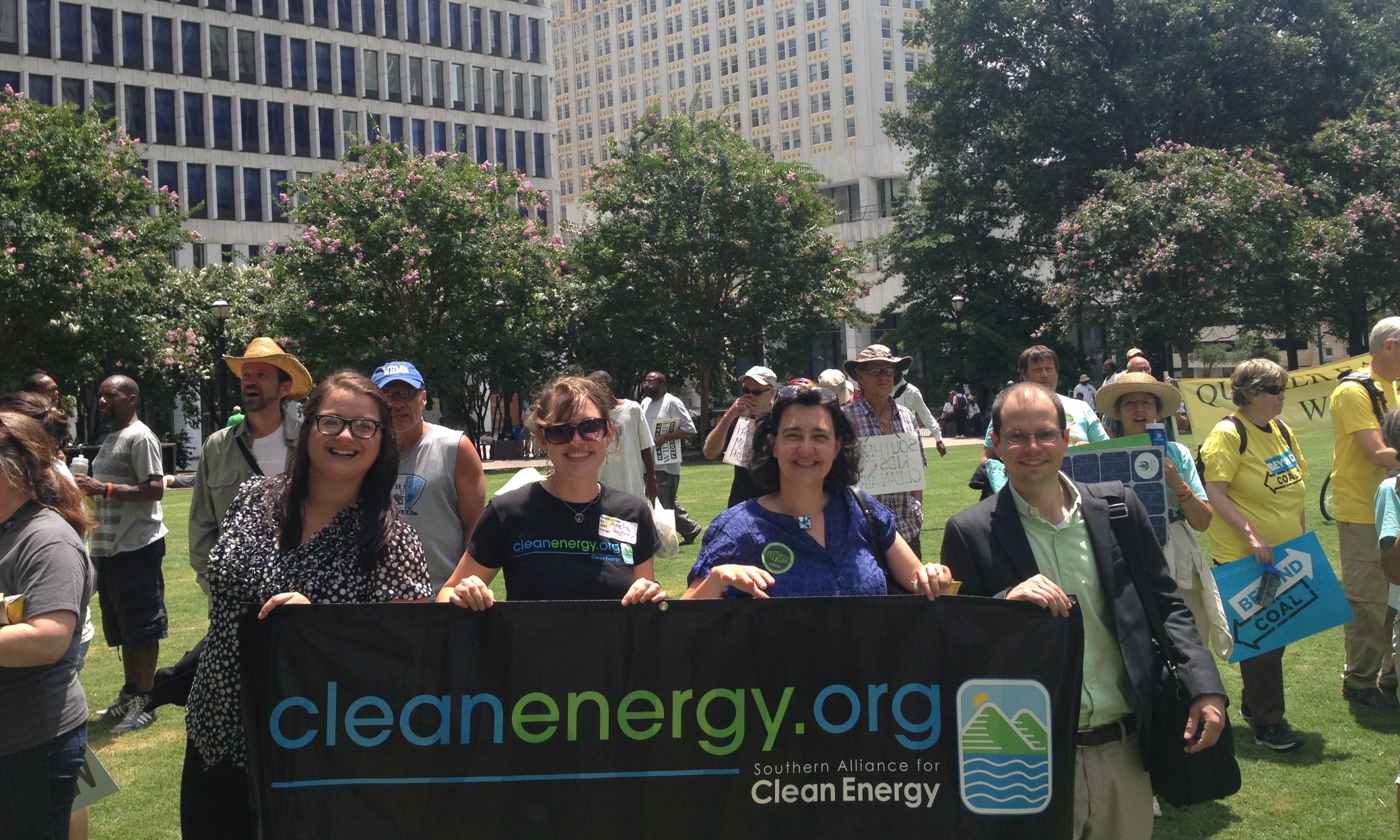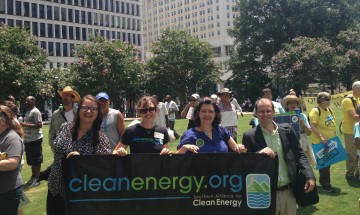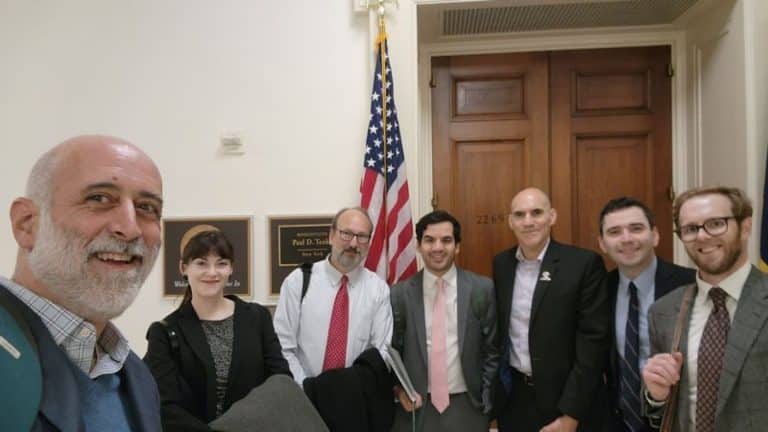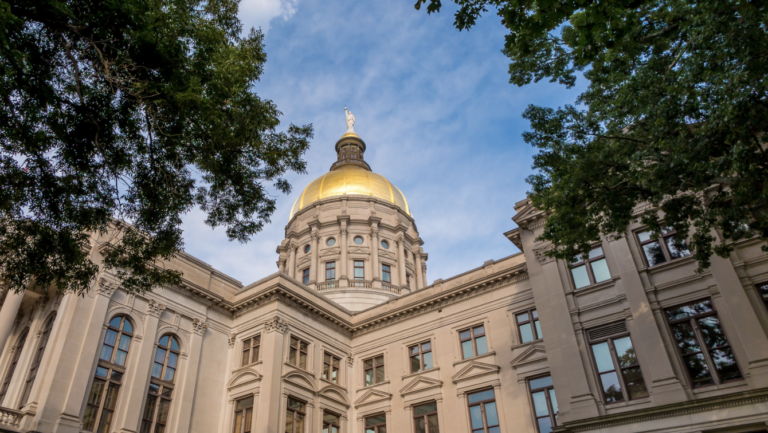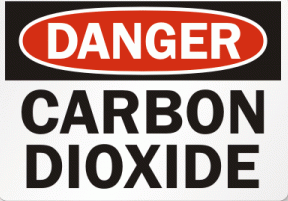 In June 2014, under authority from the Clean Air Act (CAA) section 111(d), the Environmental Protection Agency (EPA) published their draft Clean Power Plan, a proposed rule to limit carbon emissions from existing large coal facilities across the country. This is the first time the federal government has ever attempted to limit carbon emissions from existing power plants, the largest source of carbon pollution in the United States.
In June 2014, under authority from the Clean Air Act (CAA) section 111(d), the Environmental Protection Agency (EPA) published their draft Clean Power Plan, a proposed rule to limit carbon emissions from existing large coal facilities across the country. This is the first time the federal government has ever attempted to limit carbon emissions from existing power plants, the largest source of carbon pollution in the United States.
The proposed rule sets reduction goals for each state while permitting states the flexibility to develop their own methodology to attain these goals by the 2030 deadline. While the draft rule needs to be stronger in order to fully address the current climate crisis, it provides new tools for retiring the oldest, least efficient coal plants & increasing renewable energy and energy efficiency in the Southeast.
The rule contains some key components that allow significant flexibility for compliance; meaning that it has the potential to act as an incentive for utilities to advance renewable energy and increase their energy efficiency goals.
SACE ADVOCACY POSITIONS
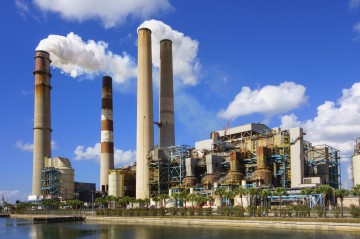 The Clean Power Plan has initiated some thoughtful discussions around ways that our Southeastern states will implement the proposed draft rule. This is a positive reflection of how some utilities in our region are already on their way toward the proposed carbon reduction targets, and is a strong indication that SACE’s diligent advocacy efforts have been critical and proof that we should use the new rule as a new tool to continue to build momentum toward embracing clean energy solutions.
The Clean Power Plan has initiated some thoughtful discussions around ways that our Southeastern states will implement the proposed draft rule. This is a positive reflection of how some utilities in our region are already on their way toward the proposed carbon reduction targets, and is a strong indication that SACE’s diligent advocacy efforts have been critical and proof that we should use the new rule as a new tool to continue to build momentum toward embracing clean energy solutions.
SACE recognizes that now is the time to make a compelling case that additional coal units in our region should be retired, and their capacity replaced with clean, safe, reliable and affordable energy resources such as energy efficiency, solar, and wind. For over 25 years, SACE has been the leading voice in our region calling on utilities to move in the right direction through our expertise and long history with utilities and regulators and by ensuring that all voices are heard in important venues at critical moments.
HOW SACE IS LEADING ENGAGEMENT IN OUR REGION
Even before this rule was released, SACE began hosting a series of three webinars for our regional allies and members to explain the rule, its implications for the Southeast and our recommendations for complying with the new standards. In addition to these webinars, SACE has also published a series of Clean Power Plan-focussed blogs providing background information and context for this rule and the Southeast.
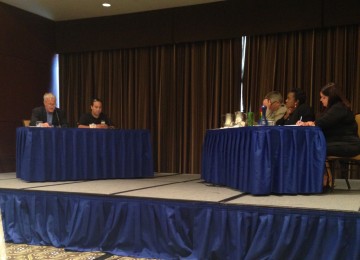 Soon after the draft rule was released, SACE staff, including Executive Director Dr. Stephen A. Smith, met with the EPA Region 4 office in Atlanta to discuss ways to make the rule stronger, with a focus on strengthening the renewable energy and energy efficiency sections, particularly for states in our region. Our staff also began the long, tedious process of actually reading the thousands of pages of EPA’s draft rule so that we can fully understand the goals EPA is recommending for each state.
Soon after the draft rule was released, SACE staff, including Executive Director Dr. Stephen A. Smith, met with the EPA Region 4 office in Atlanta to discuss ways to make the rule stronger, with a focus on strengthening the renewable energy and energy efficiency sections, particularly for states in our region. Our staff also began the long, tedious process of actually reading the thousands of pages of EPA’s draft rule so that we can fully understand the goals EPA is recommending for each state.
In July 2014 SACE staff, board members and supporters joined hundreds from around the region to testify at EPA’s Atlanta hearing and helped organize a rally and march in support of these rules. Testimony from SACE’s executive director, Stephen Smith; SACE Board member, John Noel; and several SACE staff can be found here. Throughout the past six months, SACE has continued to engage key stakeholders across the region and to push aggressively for clean, renewable energy and energy efficiency as key compliance tools to meet the new regulations. These efforts included writing, or working with key opinion leaders to write, opinion editorials around the region in support of the rule in Tennessee, North Carolina, and Florida.
Most recently, SACE joined thousands of other commenters who submitted recommendations to EPA during the public comment period that ended December 1, 2014. SACE also provided an online portal for our members and supporters to submit their own comments about the proposed rule. Our official comments reflect the fact that we believe EPA has seriously underestimated the potential of clean renewable energy and energy efficiency to play a major role in the Southeast and, at the same time, has overestimated the costs of these preferred alternatives. EPA’s draft rule also greatly underestimates the true cost of nuclear power and places nuclear energy on par with other, safer resources, when in fact we know that nuclear is not only dangerous and unpredictable, but is also cost prohibitive.
